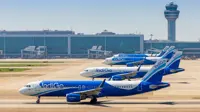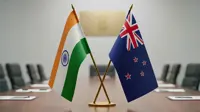UK repays last of WWII debts to the US, Canada
By By Rajiv Shankar | 29 Dec 2006
Before the end of the day today, Britain will finally have repaid the last of it its World War II loans to the US and Canada taken in 1945 and 1946. The UK treasury will pay the last of 50 instalments since 1950 amounting to $83.25 million to the US and $22.7 million to Canada.
Upon the final payments, the UK will have paid back a total of $7.5 billion to the US and $2 billion to Canada. In 1945, the US had loaned Britain $4.33 billion while Canada loaned $1.19 billion in 1946, at 2 per cent annual interest to help the country repair its war-damaged economy.
The amount repaid is almost double of the borrowing. Today, it may be hard to appreciate the huge costs and economic toll winning WWII had inflicted on the once proud and prosperous British Empire.
But, in 1945, Britain badly needed the money to finance its reconstruction after WW II, and also to import food stocks after years of strict rationing. Plus it had to pay for the equipment left by its North American allies in Britain after the end of the war, which needed to be paid for.
In the early days of the war, Britain had spent huge sums under the US cash-and-carry scheme, with down payments for its purchases. By 1941, the British economy was in a precarious state and lend-lease was introduced to ease its finances. Britain also traded some of its territories for equipment.
Till the US remained neutral, it could only provide war material to countries fighting Germany. The US did that through the lend-lease programme, which began in March 1941. The programme ended in 1945 once the US joined the war against the Axis powers after the attack on Pearl Harbour.
After the war, the loans were arranged to help Britain overcome the consequences of post-war adjustment, rather than to fund the war effort itself.
The US had effectively donated equipment for the war effort, but anything left over in Britain at the end of hostilities still had to be paid for. But the US was accommodative; it only wanted one-tenth of the production cost of the equipment and was prepared to lend the money to pay for it.
The UK took a loan for $586 million and a further $3,750-million line of credit. The loan was to be paid off in 50 annual repayments starting in 1950.Despite the low rates of interest there were six years in which Britain deferred payment because of economic reasons or domestic political expediency.
If it seems strange post WWII debts still existed 60 years later, it would be interesting to note that UK still has to repay some of its World War I debts to the US, which if adjusted for inflation, the outstanding £866 million loan in 1934 would today amount to about £40 billion in 2006. And, if adjusted by growth of GDP the figure would balloon to about £225 billion.
If that's not all, UK still has some loans raised through "consol" bonds that predate the Napoleonic wars, on which it prefers paying the 2.5-per cent interest rather than buying back the bonds.






















